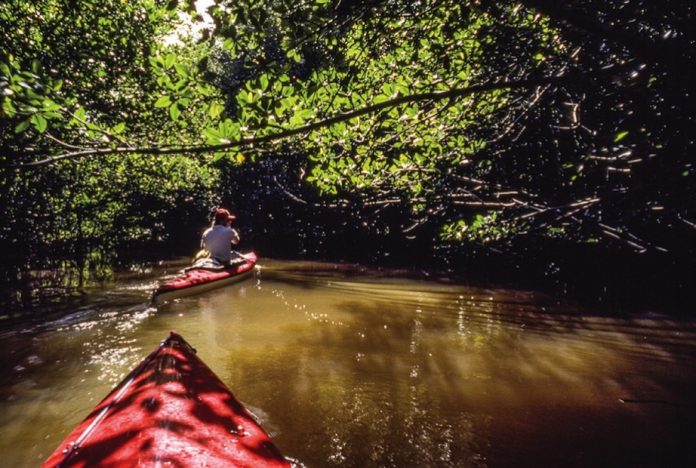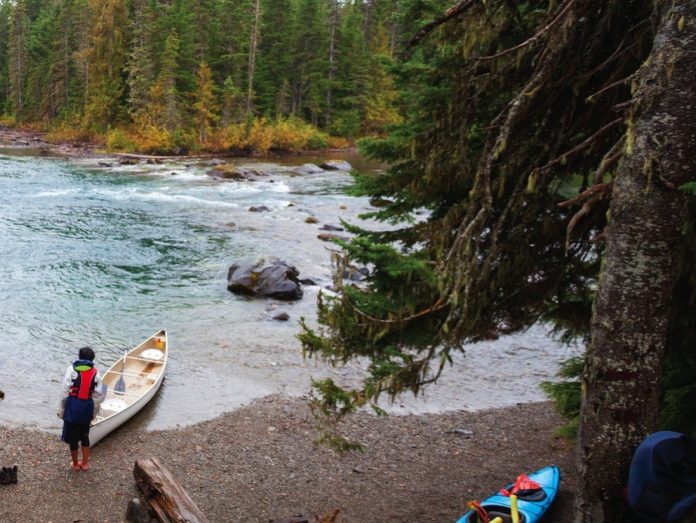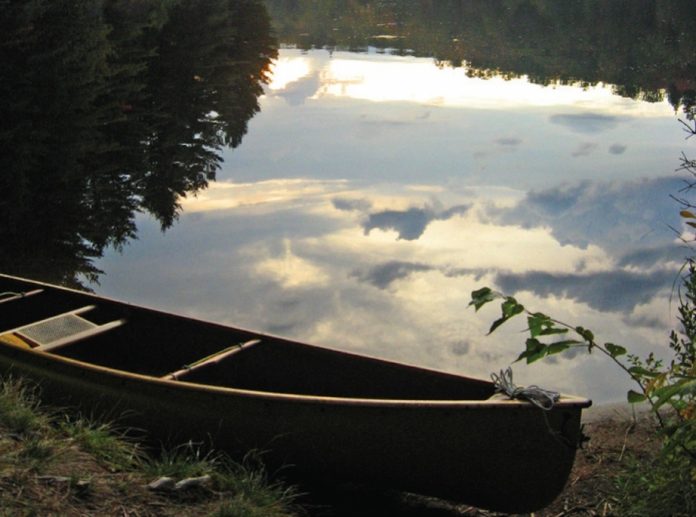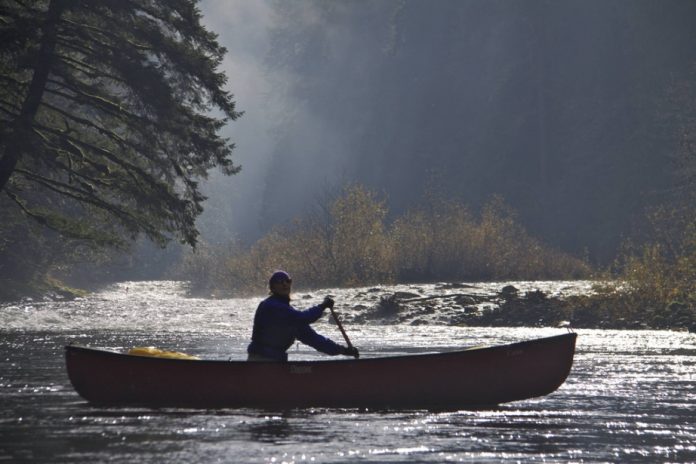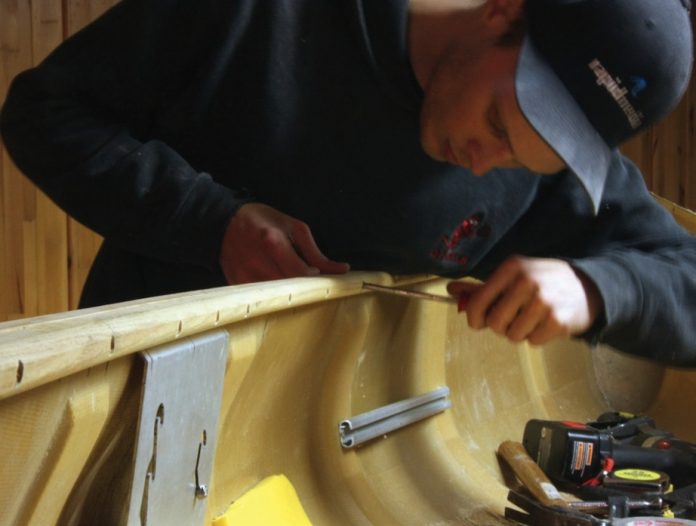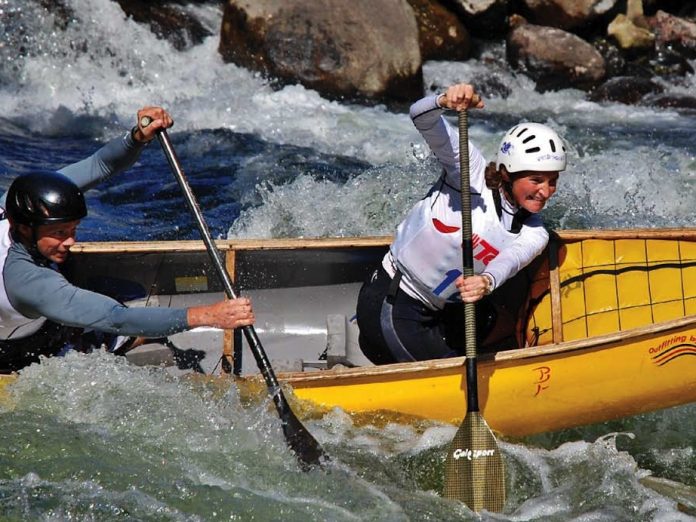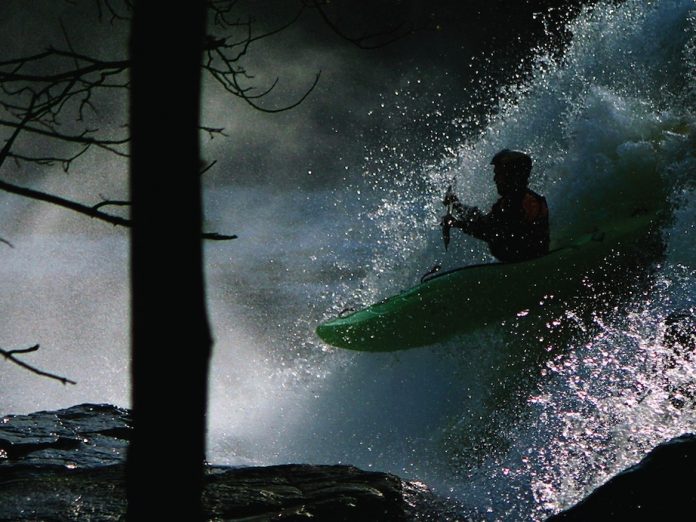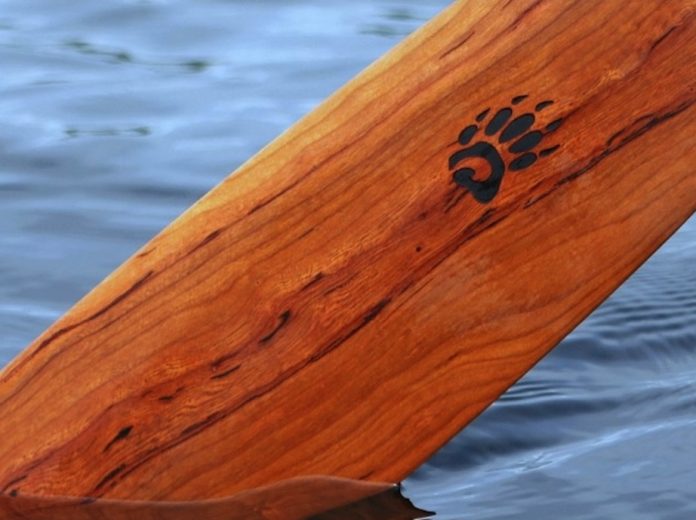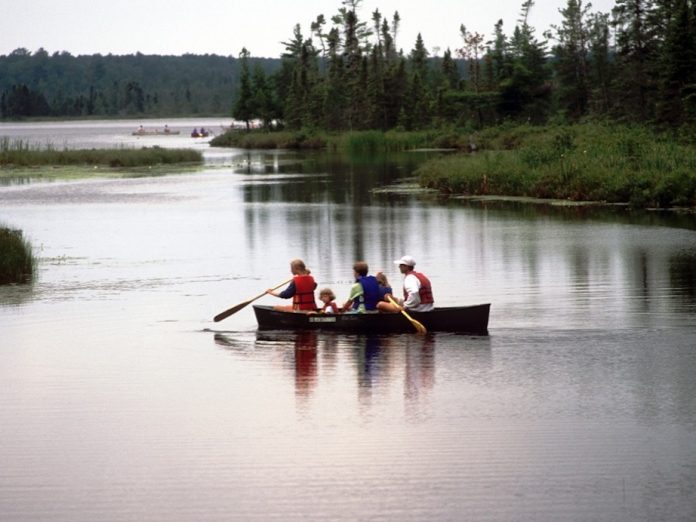Having someone ask if you would paddle in his or her bow is a great compliment and there’s much anticipation of greatness in your first run together. To have fluidity and make the moves, the bow paddler needs to be more than just a mindless power machine. An active bow paddler controls momentum, assists with eddy turns and aids in boat tilt and pitch.
Controlling Forward Momentum
Knowing when to supply power and when to back off or stop paddling altogether—without being told from the stern—is the first step to mastering the bow.
A good sense of timing is part of the momentum equation. When starting a wide cross-current manoeuvre, bow and stern paddlers build momentum together. However, as the new eddy approaches, the bow paddler may need to pour it on to reach the eddy, or back off or even pause his stroke in order to avoid overshooting the eddy. Practice timing on easy water, carving wide arcs across moderate current and giving the bow paddler time to use his eyes and plan the speed of approach.
Power from the bow is generally necessary when entering eddies as well as when starting from a standstill in difficult eddies. However, when surfing or using transport waves to cross currents, the bow paddler will probably need to supply less power and can help with fine-tuning the angle of the canoe. Too much power can result in the bow being buried in the on-coming downstream water, making it difficult for the stern person to control the angle and the boat being blown off the wave.
Turning Strokes
The bow paddler’s turning strokes are nearly always assistive. Once the stern paddler initiates a turn, the bow paddler determines its radius or sharpness. Radius is affected by the stroke you use and how much tilt you give the boat. For example, an onside sweep in place of a cross-bow rudder (the stroke formerly known as cross-draw) is a useful stroke when forward momentum and wider turning radius are desired.
Timing is key in all turning strokes. When heading into eddies, a bow rudder should be done in the eddy pool, where the water is moving upstream, not on the eddyline where the current is too undefined. Prematurely supplying turning strokes instead of forward power does two negative things: one, there is less or no momentum to cross the eddyline and two, the boat may be turned to face upstream before arriving in the eddy, waffling on the eddyline or stuck in the downstream flow of the current.
When leaving an eddy, the bow paddler should again wait on the turning stroke until her end of the boat is fully in the current.
Tilt and Body Position
Sitting up straight and tall allows you to separate your upper and lower body movement and therefore tilt more effectively. For the most part, keep your shoulders over your hips for maximum use of your body weight and control of the boat. If your weight is forward over your knees, this often makes the boat (and you) feel tippy. The bow is the area where the canoe starts to narrow—keep your weight back over your seat where the boat is wider. Leaning forward also transfers your weight toward the bow, often pinning it and making it more difficult for the stern paddler to initiate turns.
Varying your posture in the bow also plays a role in how well a canoe punches through holes, surfs and turns. Leaning forward when surfing will drop the boat down into a trough. Leaning back keeps the bow light and dry when travelling through large standing waves or once the canoe is settled in a surf.
It’s way more fun in the bow when you are a thinking paddler and able to mind your end of the boat independently. The next step in double-domination is working on communication and coordination with your stern paddler.
This article originally appeared in Rapid, Spring 2010. Download our free iPad/iPhone/iPod Touch App or Android App or read it here.



